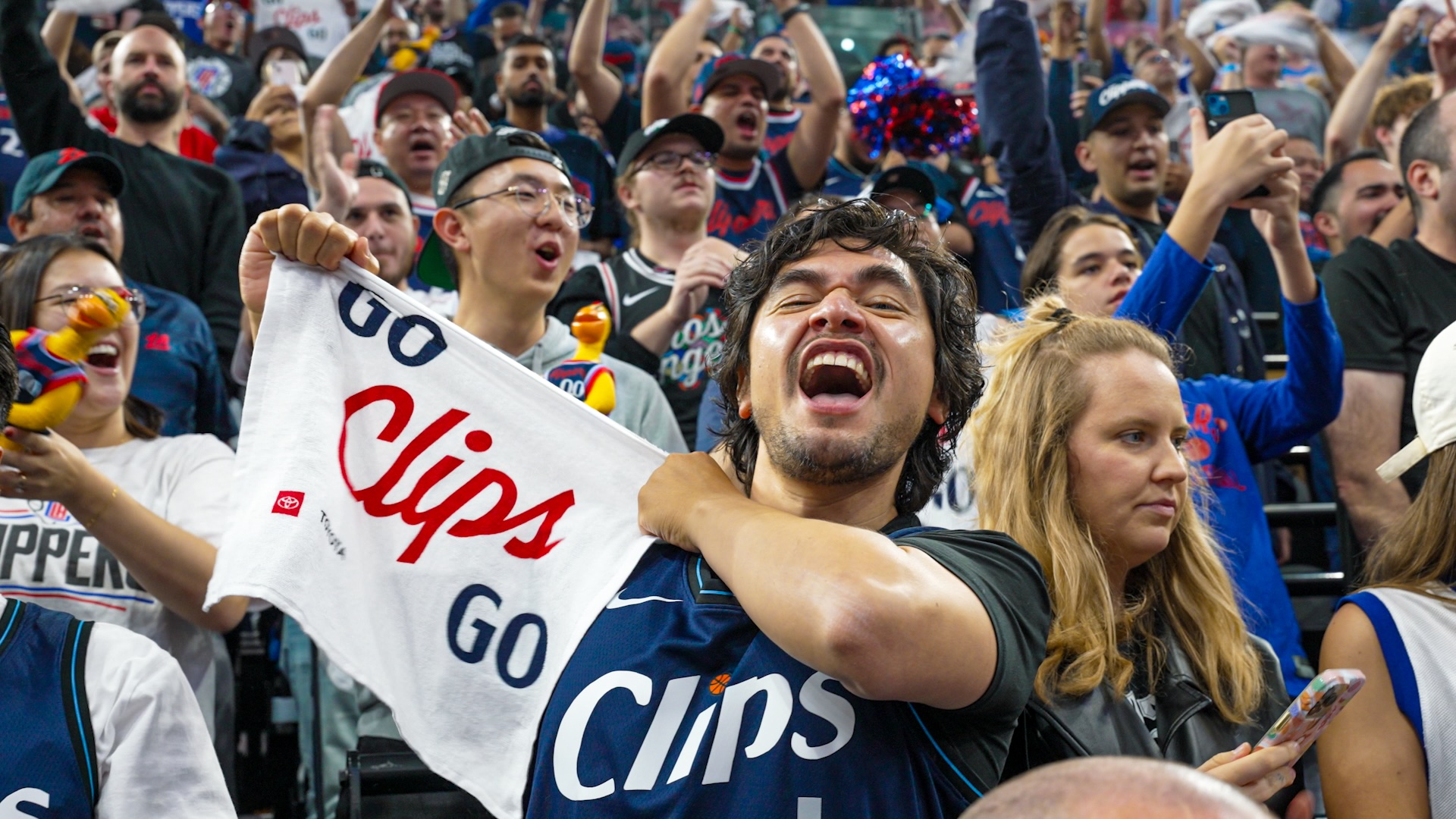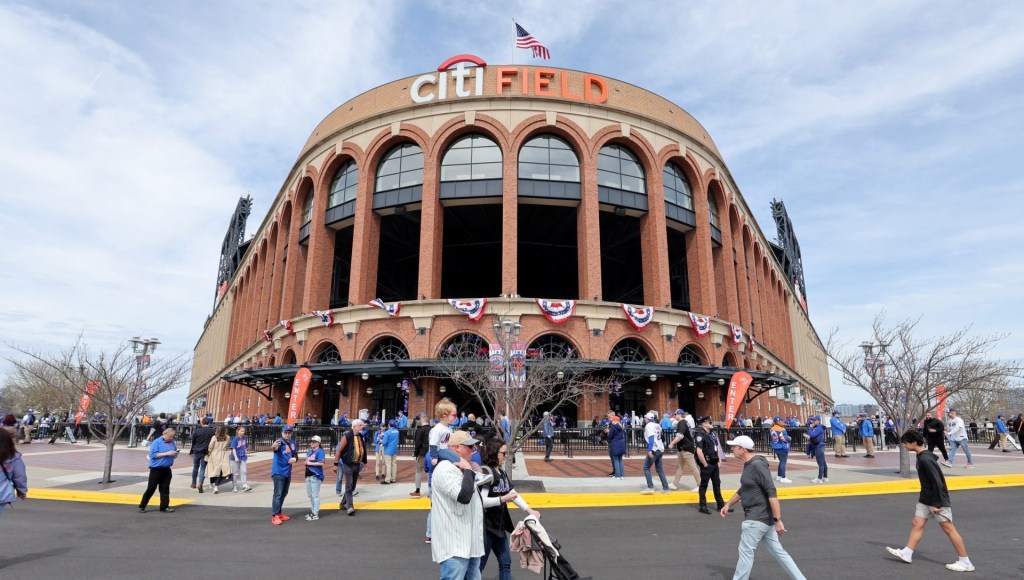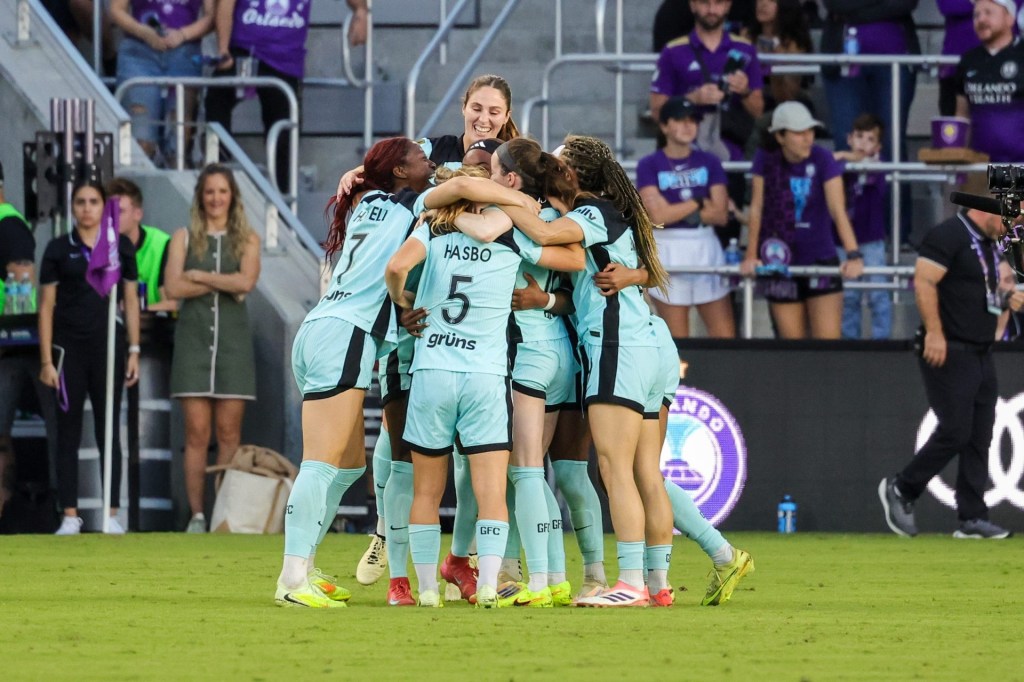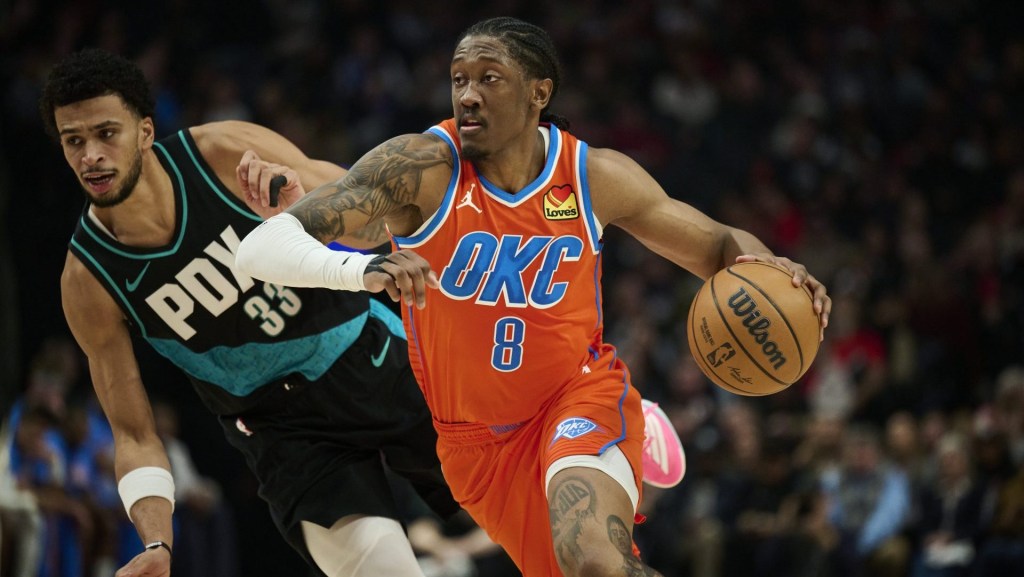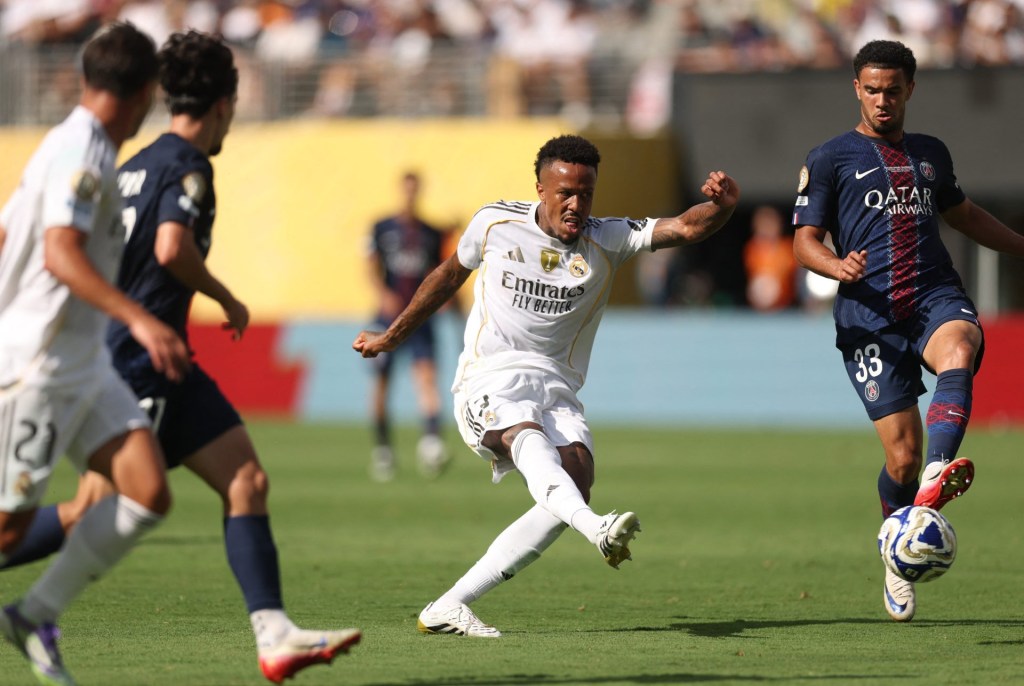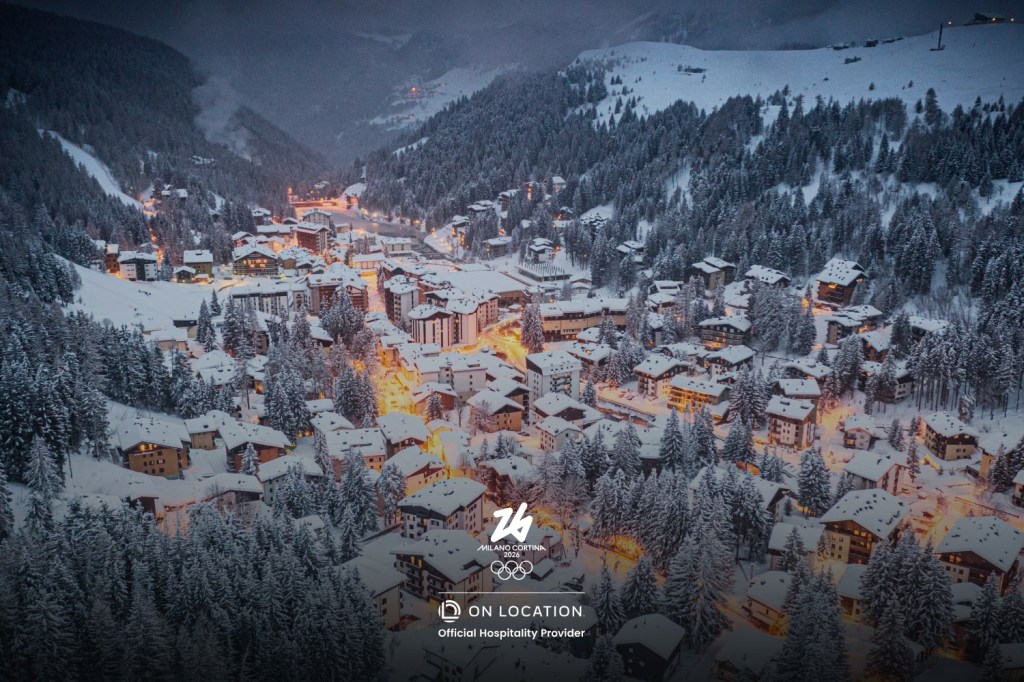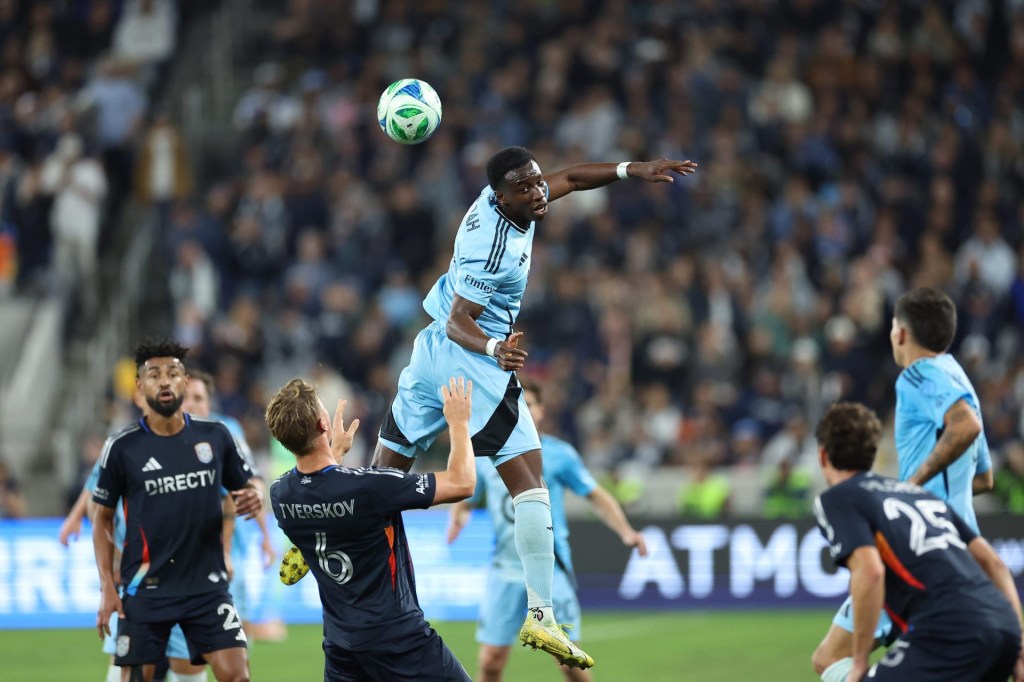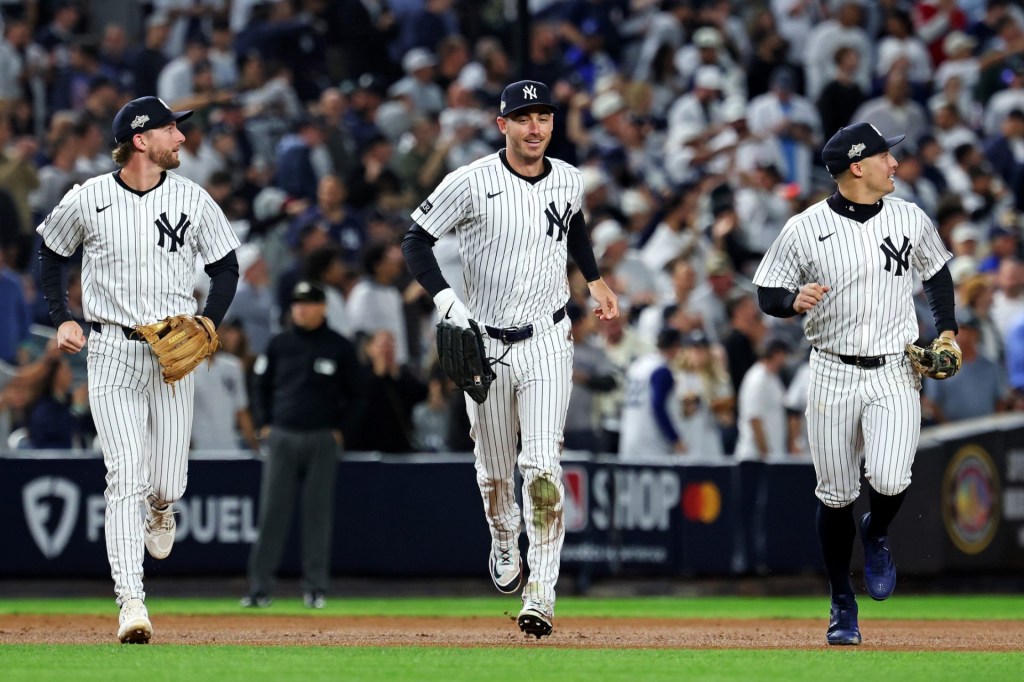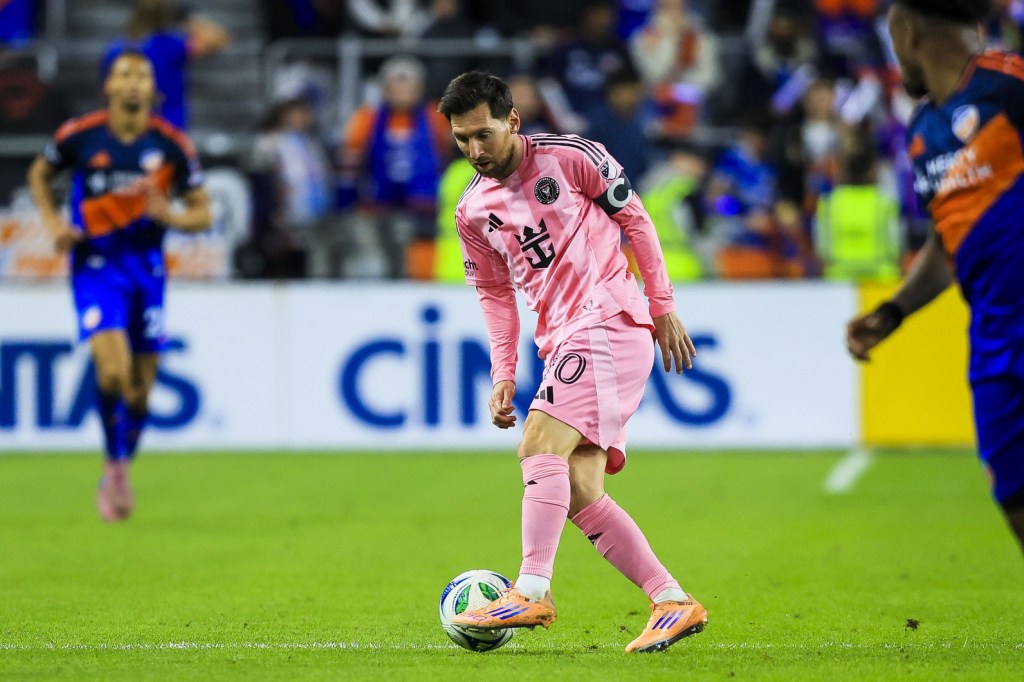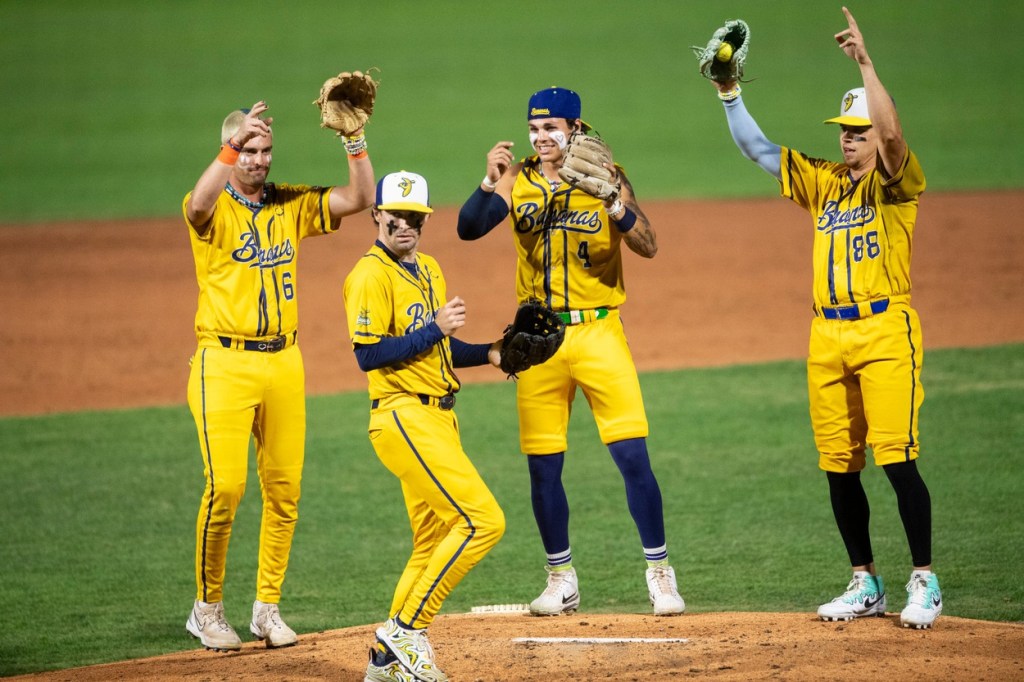LOS ANGELES — Reid Mitchell started following sports about a decade ago, and chose the Clippers as his team.
On Wednesday for the Clippers’ inaugural game in the $2 billion Intuit Dome against the Suns, Mitchell was stationed in Row 11 of the standing-room-only Supporters Section, a proud season-pass holder. He was part of the grand unveiling of The Wall, a 4,500-seat section exclusive to Clippers fans, located behind one of the baskets. Fan zones within arenas are not new in the NBA, but only The Wall covers about a quarter of the venue’s seats. (Intuit Dome’s capacity is just less than 18,000.)
The idea is for 300 of the most passionate members of Clipper Nation to bring energy for the full 48 minutes—and even to distract opposing players, who are shooting at the basket directly in front of the section in the second half.
Mitchell described himself as the perfect fit for the section because of his passionate fandom, but also cited ticket affordability. The Supporters Section pass costs $999 for 41 home games, or about $24 per game. “To just be able to cheer the Clippers as they embark on this new era … I couldn’t miss being at the first season of the Dome,” he told Front Office Sports.
The Clippers have never been known to possess the NBA’s rowdiest fan base. Decades of futility—and little brother syndrome—will do that. But an outside observer of the team’s first regular-season game at its new digs would have thought otherwise.
The game-day execution involved a hype man in front of the 13-row Supporters Section who led choreographed chants. The section has seats, but also railings in front of them that read, “They’re called stands for a reason.” Most of the fans did abide by the demands, at least during game action, and continuously made noise or waved around rubber chickens during the game.
Mitchell said his experience resembled a college sports atmosphere. “It’s just so unique to the NBA. I went to Oregon, and this is reminding me of my time at Oregon, at football games, at basketball games, like they are bringing back the college experience to the NBA.”
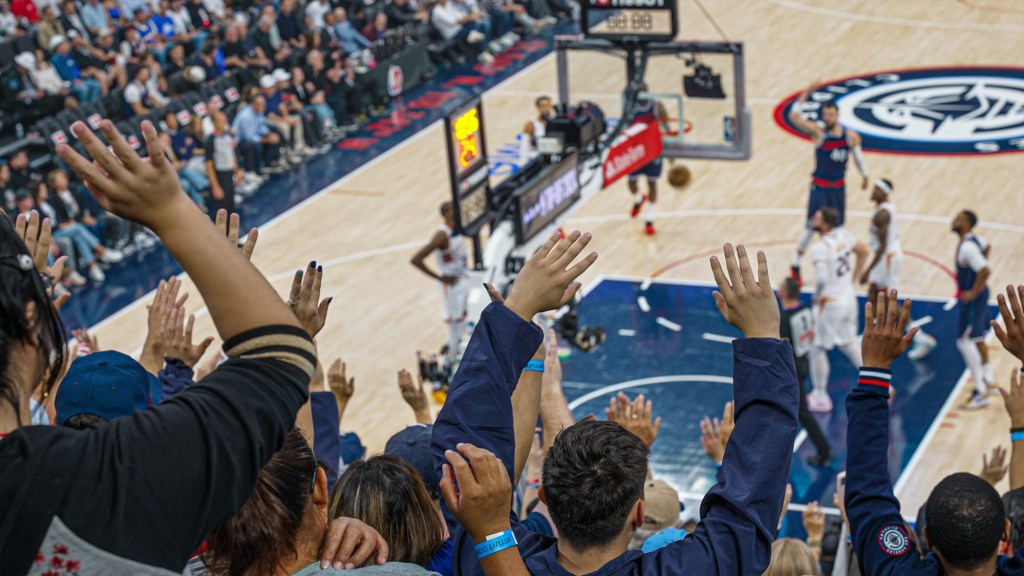
Most of the features in the Intuit Dome are not necessarily new. Gillian Zucker, the CEO of Halo Sports and Entertainment—parent company of the Clippers and Intuit Dome—said The Wall was actually inspired by the Yellow Wall, a fan section of Dortmund, a soccer team in the Bundesliga.
Zucker added the company would continue to consult with experts around the world to consolidate the best features in their new stadium. “What we would often do is try to create a little panel of the most knowledgeable people in the space and ask them just a ton of questions.”
To ensure The Wall is exclusive to Clippers fans, tickets are sold only to those who are Chuckmark Certified. To qualify, fans need to complete three of five requirements of an online form—which could include attending a previous game or following the team’s Instagram page.
Some opposing fans slip through the cracks, but the Clippers are strictly enforcing their rules. A fan can either remove their gear or be assigned to a different section.
On Wednesday, Josh Sullivan walked to The Wall in a black tank top with a Durant Suns jersey in hand. He told FOS he was asked to ditch the jersey as he entered the stands. He said he got his ticket from a friend, who is a season-ticket holder, but both were unaware of the rules of The Wall. “I didn’t like that shit,” Sullivan told FOS about his experience.
According to a Clippers spokesperson, the relocated fans are assigned to a section similar to their ticket. The spokesperson, a former league staffer, said it’s common practice for arenas to have vacant seats for relocation when issues arise, like a broken chair, and the Intuit Dome has added reassignments from The Wall as a valid reason.
Wednesday’s atmosphere was a far cry from the mood a decade ago inside Staples Center. When Steve Ballmer bought the Clippers in 2014, the team was in the midst of one of its most successful runs led by Chris Paul and Blake Griffin but in desperate need of cultural turnaround. After TMZ released a recording of Donald Sterling making racist remarks, commissioner Adam Silver announced a lifetime ban for the former owner, and the franchise was put up for sale.
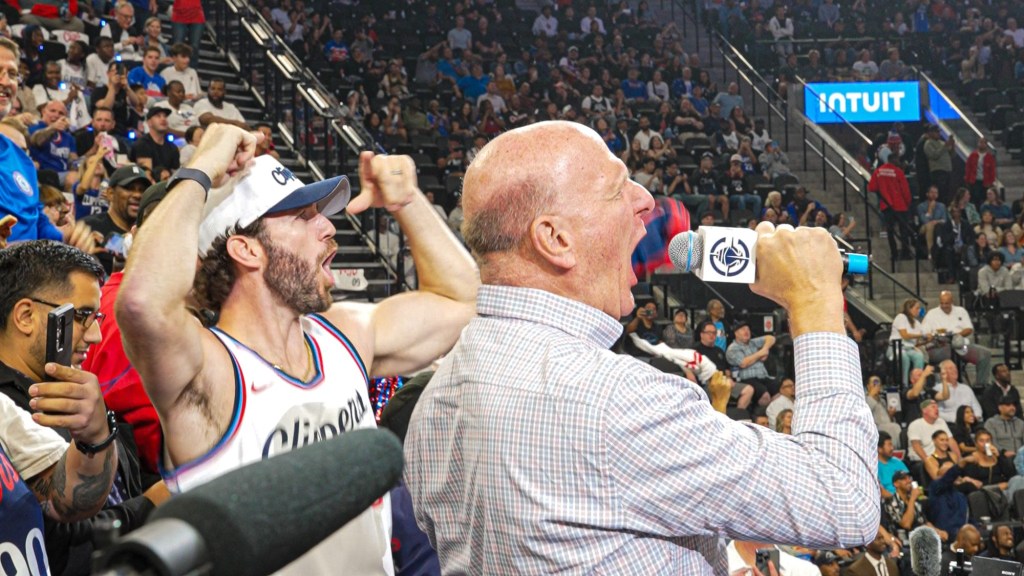
The former Microsoft CEO outbid everyone at $2 billion to take over and quickly established himself as one of the most energetic leaders in all of sports. Most importantly, despite being the richest owner, Ballmer became a man of the people, and the dark cloud from the Sterling era began to lift as one of the most fan-centric atmospheres took hold.
At Wednesday’s opener, Ballmer opened the festivities by prancing around with the Supporters Section, before screaming, “Welcome home, Clipper Nation!”
“I feel like with any franchise, these franchises tend to take on a large part of the personality of their owners,” Zucker told FOS. “In Steve, you’ve got the most engaged, enthusiastic fan of all time. So we did want to create a place where people could experience that same kind of energy and excitement, and it’s contagious.”
Despite the team’s loss in the arena’s first game, The Wall proved its value. Just ask the Suns’ star players.
“This shit might work,” said Devin Booker, who missed a free throw in the fourth quarter. The entire arena even received free Chick-fil-A sandwiches because Kevin Durant, a career 88% free-throw shooter, missed two from the charity stripe in the fourth quarter. “I absolutely love The Wall that they got,” Durant told reporters after the game. “It’s incredible. … It’s going to be a tough road environment for whoever comes in here.”
